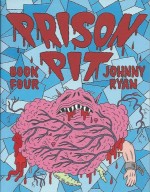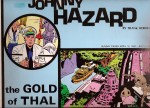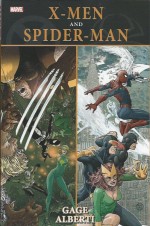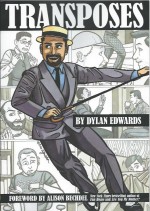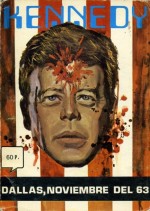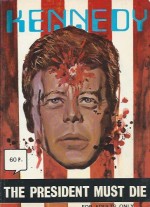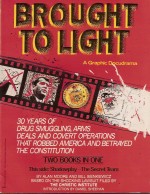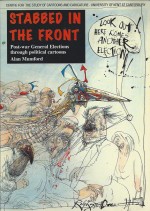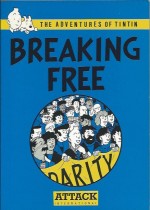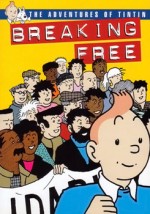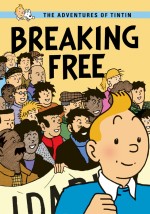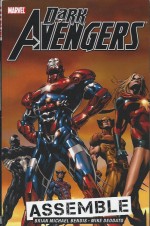
By Brian Michael Bendis, Mike Deodato, Will Conrad & Rain Beredo (Marvel)
ISBN: 978-0-7851-3852-5
One of the most momentous events in Marvel Comics history occurred in 1963 when a disparate array of freshly minted individual heroes banded together to stop the Incredible Hulk. The Mighty Avengers combined most of the company’s fledgling superhero line in one bright, shiny and highly commercial package, and over the years the roster has waxed and waned until almost every character in their universe – and even some from others – has at some time numbered amongst their serried ranks.
In recent times when the draconian Federal initiative known as Superhuman Registration Act led to Civil War between costumed heroes, Tony Stark AKA Iron Man was appointed the American government’s Security Czar – the “top cop†in sole charge of a beleaguered nation’s defence and freedom: Director of high-tech enforcement agency S.H.I.E.L.D. and last word in all matters involving metahumans and the USA’s vast costumed community…
Stark’s mismanagement of various crises led to the arrest and assassination of Captain America and an unimaginable escalation of global tension and destruction, culminating in an almost-successful Secret Invasion by shape-shifting alien Skrulls.
Discredited and ostracised, Stark was replaced by rehabilitated villain and recovering split-personality Norman Osborn (the original Green Goblin), who assumed full control of the USA’s covert agencies and military resources, disbanded S.H.I.E.L.D. and placed the nation under the aegis of his new umbrella organisation H.A.M.M.E.R.
The erstwhile Spider-Man villain had begun his climb back to respectability after taking charge of the Government’s Thunderbolts Project; a penal program which offered a second chance to metahuman criminals who volunteered to perform Federally-sanctioned missions…
Not content with commanding legitimate political and personal power, Osborn also secretly conspired with a coalition of major menacing masterminds to divvy up the world between them. The Cabal was a Star Chamber of super-villains all working towards a mutually beneficial goal, but such egomaniacal personalities could never play well together and cracks soon began to show, both in the criminal conspiracy and Osborn himself.
As another strand of his long-term plan the Homeland Security overlord subsequently sacked the Avengers and formed his own, more manageable team…
Collecting the first six issues of the controversial Dark Avengers title by Brian Michael Bendis, Mike Deodato & colourist Rain Beredo (from March-September 2009), this beguiling, suspenseful chronicle commences a slow-building saga as part of the “Dark Reign†company-wide crossover event intended to reset the entire Marvel Universe…
The drama opens in 690AD as time-bending sorceress Morgana Le Fay spies on a coterie of 21st century masters of menace comprising Doctor Doom, Asgardian God Loki, gang-boss The Hood, mutant Emma Frost, ambivalent anti-hero the Sub-Mariner and the ostensibly reformed media darling Osborn…
Constantly courting public opinion the former Green Goblin launched his Avengers whilst building up a new, personally loyal high-tech paramilitary rapid-response force. Moreover, seemingly to keep himself honest, Osborn then hired ex-S.H.I.E.L.D. hardliner Victoria Hand as his Deputy Director, tasked with watching the recovering madman for any signs of regression into criminal insanity…
His second-in-command was also occupied with the day-to-day running of the organisation – giving Osborn time to convince Greek War-God Ares, mentally troubled golden superman Sentry and altruistic, dimensionally displaced alien Noh-Var – now dubbed Captain Marvel – to enlist on his team.
Unable to any recruit any other established champions, the master planner then offered devious deals to criminal psycho-killers Bullseye, Moonstone, Venom and Wolverine‘s deeply disturbed son Daken Akihiro to impersonate actual heroes Hawkeye, Ms. Marvel, Spider-Man and the irascible mutant X-Man.
It still wasn’t enough for the cunning control freak. The answer finally came when he found a huge cache of Stark-built Iron Man suits. With a little judicious tinkering Osborn soon had his own super-armour, retooled and finished to invoke impressions of both Captain America and the Golden ex-Avenger. Now, as the Iron Patriot he could personally lead his hand-picked team from the front as a true hero should…
The first mission was nothing to boast of however as a H.A.M.M.E.R. diplomatic team escorted Dr. Doom back to his devastated homeland of Latveria, ravaged by a S.H.I.E.L.D. punitive mission in retaliation for the Dictator’s numerous outrages. No sooner had the escorts arrived though than Le Fay attacked, eager to kill Doom for a thousand slights and his previous treatment of her…
The second, flashback-filled issue fills in some blanks in the mystic rivals’ shared history as the Sinister Sorceress unleashes her horde of horrors against Doom and the American Agents, precipitating a deadly response from the Iron Patriot and his private army…
Soon the ersatz Avengers are knee-deep in gore as they mercilessly destroy the witch’s minions and when the unstoppable Sentry tears off Morgana’s head it seems their first mission is a complete success.
However Le Fay is the Mistress of Time and simply returns with a greater force, killing Sentry in her determination to kill Doom – until another Avenger brutally ends her only to be her first target on her next appearance. The pattern just keeps repeating and soon Iron Patriot is almost out of Avengers…
The third issue opens with more flashbacks as Osborn uses psychological warfare to bind the emotionally damaged Bob Reynolds to him. The too-good-to-be-true, nigh-omnipotent nice-guy metahuman is secretly afflicted with an alternate personality dubbed The Void and only a slavish, puppy-like devotion to childhood sweetheart-and-wife Lindy enables Sentry to resist the horrendous dark urgings of his other self…
Osborn has convinced the golden hero that his deadly split-personality is a fiction that can be fought – but they’re both quite wrong…
Back at the battle Doom and Osborn combine technological resources to take the fight back to Le Fay in the far past and undo most of her victories, even restoring Latveria to a measure of its former self. Only Sentry cannot be resurrected and the grim Americans head home pondering the early loss of their most powerful member. When they reachNew Yorkhowever Sentry is waiting for them and with horror Osborn realises that it’s not Bob Reynolds in charge of that tousled golden head…
Episode #4 changed tack by confronting a big issue head on. A crisis had occurred when the true Hawkeye attempted to expose his Avenger duplicate as a sham and Osborn quickly manufactured a televised confession which brilliantly turned the tables on his accuser by pushing all the viewers’ buttons. Now the reformed Goblin was merely a decent American patriot recovering from mental illness, thanks to the grace of God, and anyone who said otherwise a sick, ungrateful, godless traitor…
The former villain is on an unbeatable roll: after all didn’t he also talk down the Void and re-establish Bob as dominant personality in the composite meta-human time bomb of the reborn Sentry? Yet Osborn still isn’t as secure as he thinks: cracks begin to appear when the counterfeit Ms. Marvel begins her campaign to seduce and control her Avenger comrades. Without even knowing why she needs to undermine the team’s cohesion and challenge Osborn’s authority, the rogue former psychiatrist beds naive Noh-Var and lets slip to the innocent alien dupe the kind of people his fellow “heroes†truly are…
This first collection spirals to spectacular climax when a rebel band of Atlanteans attackLos Angelesand Osborn’s demand for a show of retaliatory force provokes a split in the Cabal. Unsatisfied when the Sub-Mariner quits the league of villains, the increasingly unstable Security Czar then sends his puppet Sentry into the depths of the ocean to deliver a very clear reprimand – one which leaves only one Atlantean alive…
And as Osborn discovers that his Captain Marvel has gone AWOL the manic, chaos-loving goblin voice inside the head ofAmerica’s Top Cop begins to laugh exultantly…
To Be Continued…
Certainly not one for younger fans, this is another striking saga from author Bendis, packed with intrigue, suspense and breathtaking action, magnificently illustrated and supplemented by a glorious cover gallery and variants by Deodato & Beredo, Marko Djurdjevic, Adi Granov, Mike Choi, Daniel Acuña, Stefano Caselli, Khoi Pham & Rafa Sandoval.
Experimenting boldly with narrative sequencing and contrasting time frames, flipping back and forth across a number of story-threads and superbly building tension through misinformation, Dark Avengers: Assemble is mired in the minutiae of Marvel Universe history, so whilst this offers a moodily different take on Fights ‘n’ Tights thrillers that will impress devotees of the genre and continuity, newer readers need to be prepared to put up with a little contextual confusion. Nevertheless, although the tale might be all but incomprehensible to casual readers, this clever display of comics creativity illustrates the mature extremes to which “straight†superhero stories can be pushed.
© 2009 Marvel Characters, Inc. All Rights Reserved.

